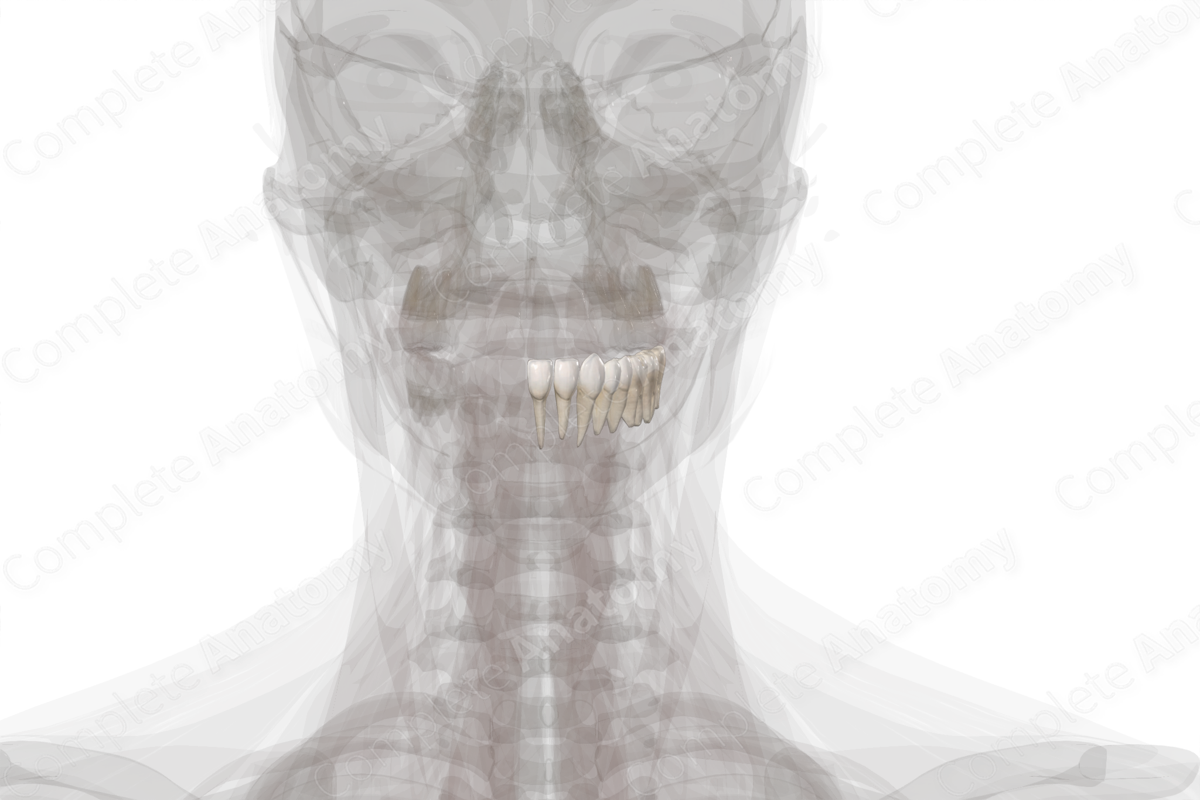
Description
In the adult permanent dentition, the mandibular dental arch (dentition of the mandibular dental arcade, lower dental arcade, or mandibular teeth) are the sixteen inferiorly located teeth that are embedded in the alveolar processes of the mandible. The mandibular dental arcade is equally divided into left and right quadrants.
Based on their specific functional roles, there are three primary tooth morphologies in human dentition:
- incisiform teeth, which are the blade-like teeth that are specialized for the cutting (incision) of food;
- caniniform teeth, which are the sharp, pointed teeth that are specialized for the gripping (prehension) and tearing of food;
- molariform teeth, which are the teeth that have cusped surfaces and are specialized for the crushing or grinding (comminution) of food.
In the adult permanent dentition, the two quadrants of the mandibular dental arch consists of eight teeth each:
- mandibular central incisor tooth;
- mandibular lateral incisor tooth;
- mandibular canine tooth;
- mandibular first premolar tooth;
- mandibular second premolar tooth;
- mandibular first molar tooth;
- mandibular second molar tooth;
- mandibular third molar tooth.
The incisor and canine teeth are collectively known as the anterior teeth, while the premolar and molar teeth are known as the posterior teeth.
Learn more about this topic from other Elsevier products
Dental Arch

buccoversion a dental malocclusion in which a premolar or molar tooth is in its anatomically correct position in the dental arch, but is abnormally angled in a buccal direction.




